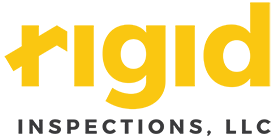There are items that are not required to be inspected during a home inspection. This does not necessarily mean that your inspector won’t take a look at them. These items include, but are not limited to:
- fences and gates (if they are directly affecting the house in a negative way I will mention the issues in the report)
- screening, shutters, awnings, and similar seasonal accessories (if they have significant defects I will mention them in the report)
- geological and/or soil conditions
- seawalls, break-walls, and docks
- outbuildings or any other detached structure with the exception of garages and carports
- erosion control and earth stabilization measures
- pools and spas
- refrigerators (I test for operation, cold or not cold)
- washers
- dryers
- clothes washing machine connections (I look for signs of leaks and corrosion)
- wells, well pumps, or water storage related equipment
- solar water heating systems
- fire and lawn sprinkler systems
- private waste disposal systems
- window A/C units
- central vacuum systems (I test for working or not working)
- water softeners
- alarm and intercom systems
- low voltage wiring systems
- ancillary wiring systems and components
- measure amperage, voltage, or impedance (I measure voltage on main service lines)
- heat exchangers (these are rarely visible and never fully visible)
- humidifiers or dehumidifiers
- electronic air filters
- solar space heating systems
- underground items including underground storage tanks
- outdoor cooking appliances
- satellites, antennas, or other installed accessories
- interiors of flues or chimneys that are not readily accessible
- and any item that is not a permanent component of the home.
- paint, wallpaper, and other finish treatments (I consider these cosmetics)
- carpeting
- window treatments
- household appliances
- fire screens and doors on fireplace
- automatic fuel feed devices
- mantels and fireplace surrounds (I check mantels for proper attachment)
- heat distribution assists (gravity fed and fan assisted)
- Drop ceilings tiles are not removed as they are easily damaged and this is a non-invasive inspection (if I suspect leaks or defects I will move tiles in areas for better visual)
The inspector does not determine:
- the condition of systems and components that are not readily accessible
- the remaining life expectancy of systems and components (I may comment on large appliances)
- methods, materials, and costs of corrections
- future conditions including but not limited to failure of systems and components
- the suitability of the property for specialized uses
- compliance of systems and components with past and present requirements and guidelines (codes, regulations, laws, ordinances, specifications, installation and maintenance instructions, use and care guides, etc.)
- the market value of the property and its marketability
- the advisability of purchasing the property
- the presence of plants, animals, and other life forms and substances that may be hazardous or harmful to humans including, but not limited to, wood destroying organisms, molds and mold-like substances (If I see substance that resembles mold I will mention it in the report)
- the presence of environmental hazards including, but not limited to, allergens, toxins, carcinogens, electromagnetic radiation, noise, radioactive substances, and contaminants in building materials, soil, water, and air
- the effectiveness of systems installed and methods used to control or remove suspected hazardous plants, animals, and environmental hazards
- operating costs of systems and components
- acoustical properties of systems and components
- whether water supply or waste disposal systems are public or private
- water supply quantity or quality
- heat/cooling supply adequacy or distribution balance
- soil conditions relating to geotechnical or hydrologic specialties
- whether items, materials, conditions and components are subject to recall, controversy, litigation, product liability, and other adverse claims and conditions.
The inspector does not operate:
- systems and components that are shut down or otherwise inoperable
- systems and components that do not respond to normal operating controls
- shut-off valves and manual stop valves
- automatic safety controls.
The inspector does not enter:
- areas that will, in the professional judgment of the inspector, likely be dangerous to the inspector or to other persons, or to damage the property or its systems and components
- under-floor crawlspaces and attics that are not readily accessible.
The inspector does not:
- perform procedures or operations that will, in the professional judgment of the inspector, likely be dangerous to the inspector or to other persons, or to damage the property or its systems or components
- describe or report on systems and components that are not included in the Standards of Practice and that were not inspected
- move personal property, furniture, equipment, plants, soil, snow, ice, and debris
- dismantle systems and components, except as explicitly required by the Standards of Practice
- reset, reprogram, or otherwise adjust devices, systems, and components affected by inspection required by the Standards of Practice
- ignite or extinguish fires, pilot lights, burners, and other open flames that require manual ignition
- probe surfaces that would be damaged or where no deterioration is visible or presumed to exist
- disturb insulation
- determine draft characteristics
- move fireplace inserts and stoves or firebox contents
